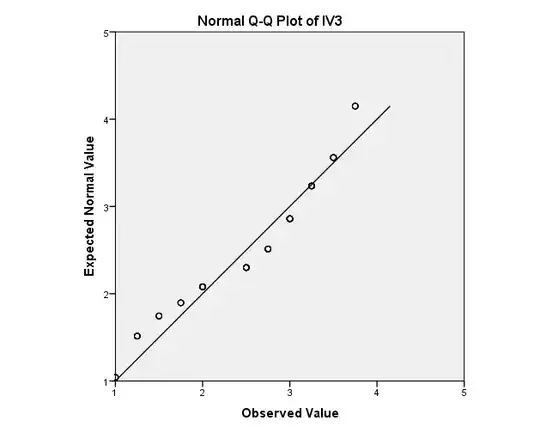When dealing with interval data coming from questionnaires using Likert-Scales, I want to be able to determine the normality of the data in question. Some of the answers here on Cross Validated have affirmed the idea that using statistical tests such as the Shapiro-Wilk test are not very useful for various reasons discussed by people much more knowledgeable than I on the subject.
A common alternative is to use visualization of the data, usually through a Quantile-Quantile Plot (Q-Q Plot). However, I find myself very unsure as to what my parameters should be. I know that the closer the points are to line, the more normally distributed the data is, but what about a picture like this
I know that this one would obviously be considered relatively normally distributed:
but even then, I'm not sure what I should be looking for exactly or how far away can the points deviate from the line before being considered non-normal.
Also, in the interest of seperating it from the other question that this has been considered a duplicate (BTW thanks for pointing that out; it did help me) I want to mention exactly what the Q-Q Plot represent. In measuring the correlation effects of variables in a theoretical model, a questionnaire was used to measure each variable using multiple questions. The Variables in the images (IV, DV, etc...) represent the independent variables and dependent variables which are averages of the responses of the questions that make up the variables. I don't know how much of a difference this makes (if at all).

